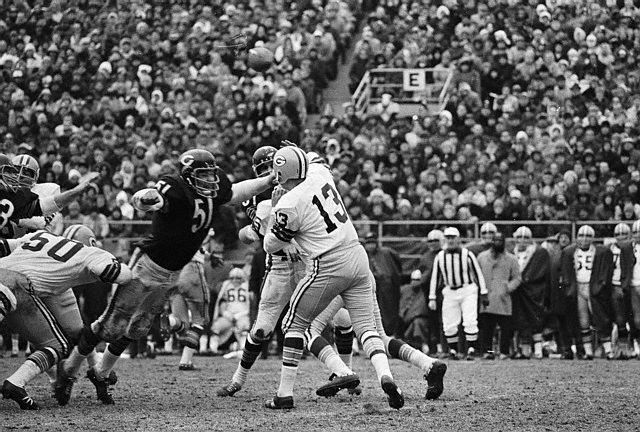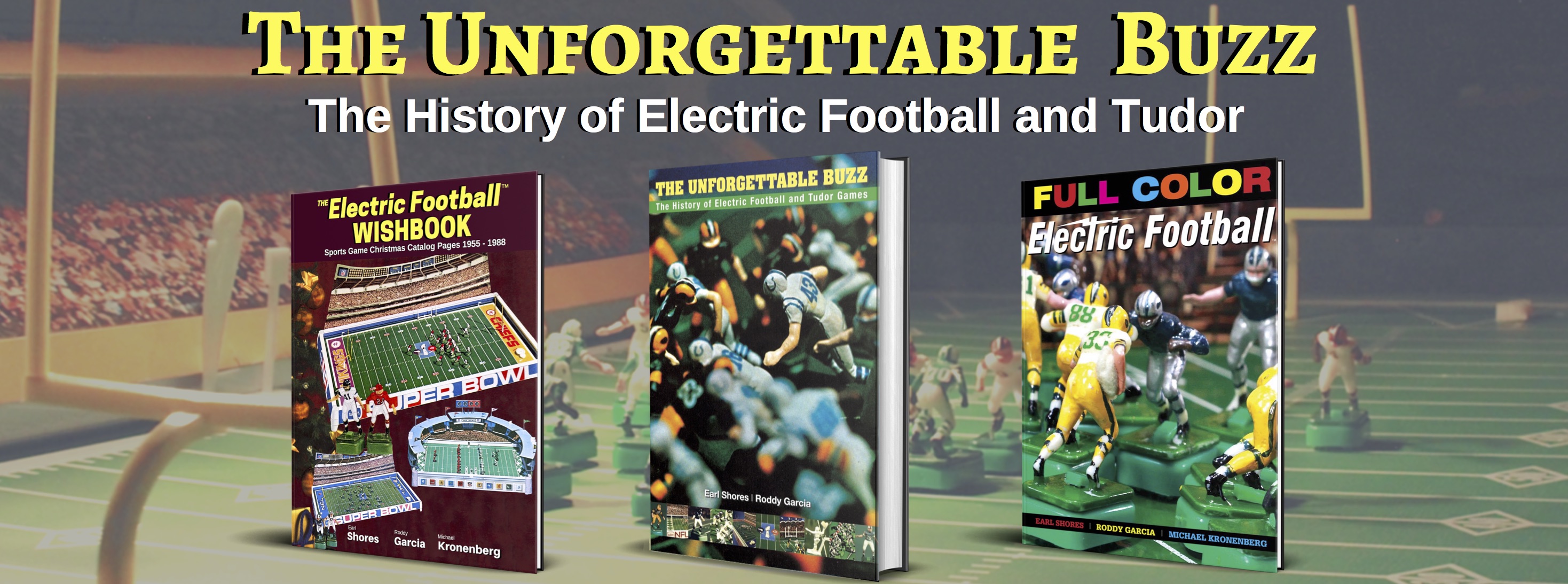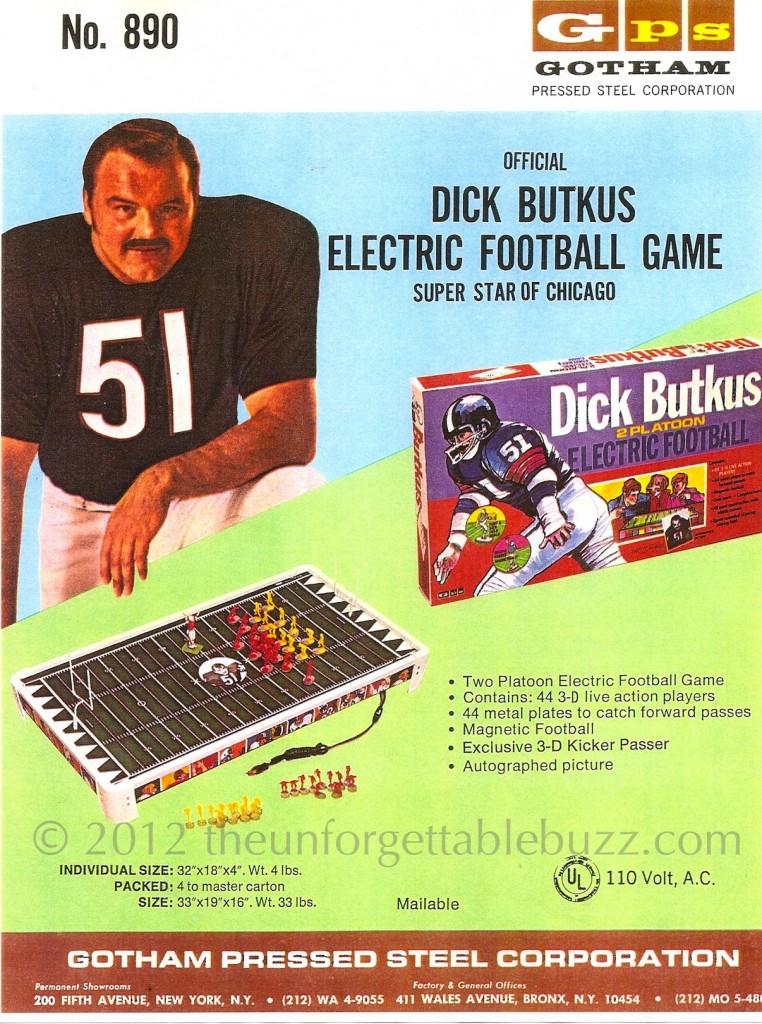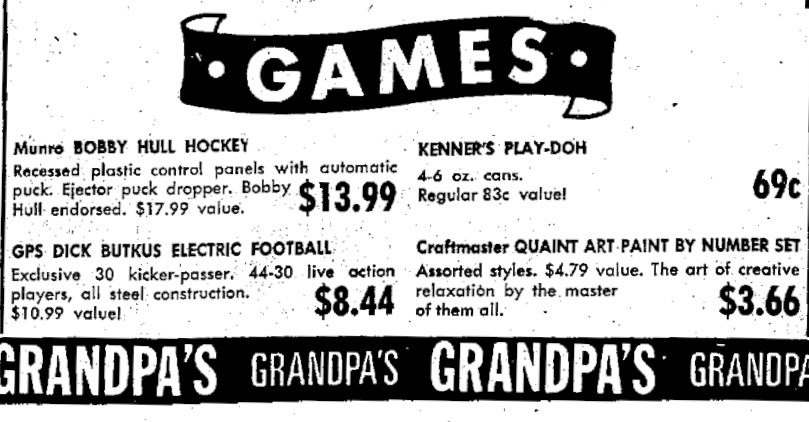Electric football had become quite crowded by 1972. Not only were long-time players Tudor and Gotham still in the game, they had recently been joined by “rookies” Coleco and Munro. Both of these new companies charged onto the field like bonus-baby first-round draft picks – loaded with talent, desire, and cash.
Tudor at that point was a mid-career Hall of Famer, while Gotham was the aging veteran whose knees were gone and was hanging on to a roster spot by a very thin thread. Gotham already had electric football games endorsed by Joe Namath and Roman Gabriel. So in 1972 Gotham decided to go on the “defensive,” coming out with games endorsed by defensive All-Pro’s Dick Butkus (Bears) and Bob Lilly (Cowboys).
What Gotham did with the Butkus model highlighted the company’s problems. It was a small game (32” x 18” G-880-size), and its main gimmick was that is was a “2 Platoon” Gotham game. That meant it came with 44 players. Since Gotham’s electric football players were never particularly “prized” to start with, having twice as many wasn’t a great selling point.

Chicago Bears linebacker Dick Butkus (51) is ready to tackle Green Bay quarterback Don Horn (13) just as Horn releases the ball. — Image by © Bettmann/CORBIS
And the only thing that made it a Dick Butkus game was Butkus’ image on the box and on the field. Unlike the Gotham Namath and Gabriel games, which came with a quarterback figure resembling the player, the Butkus game did not have special linebacker/tackler figure. But it did come with an “autographed” Butkus picture.
In this picture and in all the images Gotham used of the Bears’ star linebacker, there was no trace of the NFL. Tudor had the NFL license – Gotham could only hint at Butkus’ connection with the Bears. He had on a dark jersey, his trademark no. 51, but there was no “C” anywhere. In fact, Gotham was calling him the “Super Star of Chicago.”
Gotham made sure the game was available in the Chicago area for the 1972 Christmas season. And Butkus himself had a very strong season for the Bears, despite suffering from chronic knee issues that would bring his Hall of Fame career to a close the following season.
So was this model profitable for either Gotham or Mr. Butkus? Not likely. Gotham was bought out by Munro in 1973. And we’re not totally sure how Dick Butkus was compensated for his endorsement, but Cowboys’ great Bob Lilly was kind enough to give us a clue. Gotham paid the All-Pro and Hall of Fame-bound Mr. Lilly in games. It’s hard to imagine they paid Dick Butkus any differently.
While this game is a rare one, it just doesn’t have the features to make it “Roadshow” rare. But it is a very important part of electric football’s past. And there’s much more of Gotham’s electric football history in The Unforgettable Buzz.
Earl & Roddy


